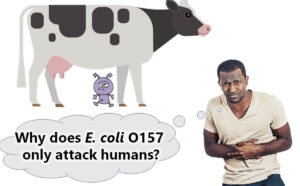Understanding Gram-Negative and Gram-Positive Bacteria: Sorting Microbes in Food Microbiology Toolbox
In recent years, species identification based on 16S rRNA gene analysis has become increasingly popular. As a result, bacterial classification has become more intricate and complex. However, in the field of food microbiology, it is essential to grasp the broader framework before delving into detailed classifications. In a series of upcoming articles, I would like to discuss the microbial classification method, which serves as a useful mental toolbox for organizing and memorizing various Gram-negative and Gram-positive bacteria commonly encountered in food microbiology. The composition of this mental toolbox differs slightly between Gram-positive and Gram-negative bacteria, making it advantageous to internalize these frameworks.
Understanding Guidelines and Reference Values for Total Aerobic Counts in Food and How to Interpret Data
In this article, our aim is to understand the guidelines and reference values for general microbial counts in food, as well as how to interpret the data. Without a basic understanding of the microbial counts in our surroundings, such as fresh and spoiled foods, feces, and the air, we risk falling into unexpected pitfalls when interpreting the results of general microbial counts.
Why Does E. coli O157 Only Cause Foodborne Illness in Humans and Not Cattle?
As a university professor teaching food microbiology, I often get asked questions like, 'Why do some bacteria produce toxins that harm humans? If E.coli O157 can live in a cow's gut without causing any harm to the cow, why does it make humans sick?' You see, it's easy to perceive this subject, food microbiology, from a human-centric viewpoint - it often seems like these harmful microbes are picking a fight with us humans. But, if we look at it from a wider perspective, say the viewpoint of Earth's biological diversity, this human-centric view is flawed. So in this article, I'd like us to look at the relationship between microbes and humans from a fresh angle. Let's try to understand it in the context of the grand history of microbes on Earth. It's an entirely different narrative, one where we are not necessarily the protagonists, but part of a vast, interconnected system.
A Newcomer's Perspective: The History of Life on Earth and Microbiology
When it comes to food microbiology, we often view pathogenic microorganisms as if they are against humans. However, this perspective is narrow and overlooks the vast history of life on our planet. This article will offer a different perspective and place the relationship between microorganisms and humans in the context of the history of life on Earth.



